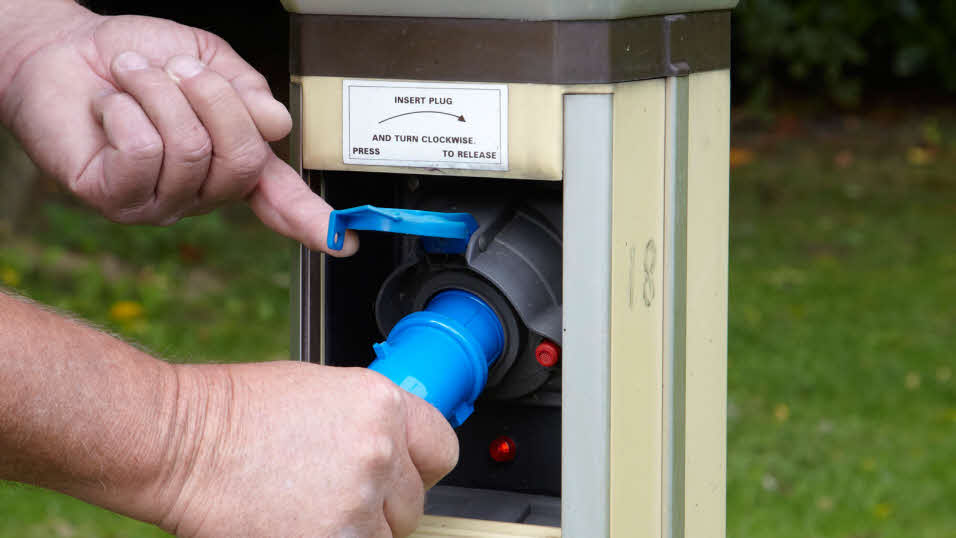To be safe, an outfit’s mains wiring installation should be carried out by an electrical expert and you should ideally have an inspection and written report once every three years by an appropriately qualified contractor.
A new outfit will have mains wiring installed correctly if it has a National Caravan Council (NCC) certificate.
The electricity supplies on all Caravan and Motorhome Club sites are protected against earth faults by a Residual Current Device (designed to prevent you from getting an electric shock).
They’re also protected against over currents by miniature circuit breakers. (Check that a similar standard of safety is provided on any other site you stay on).
The supply must be taken into the caravan by means of an electrical socket; do not take a lead through a window to electrical equipment inside the outfit.
If you’re staying on a non-Club site and equipment is not to International Electrotechnical Commission Standard, replace your plug with the type necessary for that site and double check it’s correctly wired up.
When you’re staying on our Club sites, we have a great deal in place to ensure you have a safe and enjoyable holiday but please be aware that when it comes to hooking up to our electricity your safety is your responsibility.
The Caravan and Motorhome Club and any other site management can only be responsible up to the socket outlet to which you connect. Therefore you’ll be responsible for the connector cable, plugs and all electrical equipment in your outfit.
We cannot accept responsibility for any accident that arises from your use of the electrics. This includes any trying to connect unsafe or unsuitable electrical equipment to the site socket outlet.
As the site staff are not qualified electricians, they’re unable to provide any services relating to the supply of electricity from the site socket outlet to your outfit. They will however be able to advise you about the connection and disconnection of the supply at the socket outlet.
If the site staff have any reason to be concerned about the safety of the outfits’ connection, they may be required to decline to offer a supply. This is in the interest of keeping the site as safe as possible for all its visitors.
The Caravan and Motorhome Club cannot accept any responsibility for loss, injury or damage caused by any assistance provided to members save in respect for the connections or disconnection of the supply from the socket outlet.


